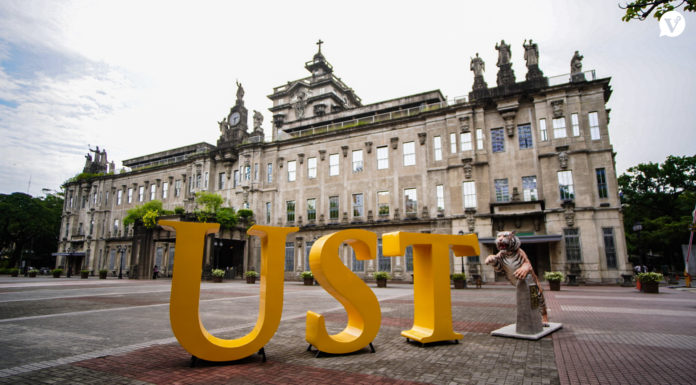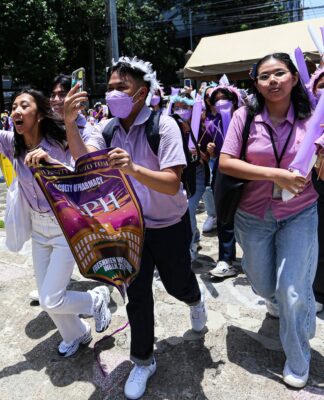WITH hard lessons learned following the wrath of storm “Ondoy” last month, the UST crisis management committee has decided to “iron out loopholes” by revising the University’s crisis management manual.
Fr. Manuel Roux, O.P., chairman, said the committee was unprepared for the storm that struck last September 26, and pledged to have a “more organized team” when the next calamity strikes.
“Medyo nagkagulo. We were not prepared for that kind of [calamity],” Roux said. “They have to understand that nobody expected this calamity to happen. Everybody must take part in our responsibility to keep every Thomasian safe.”
Tropical storm “Ondoy” dumped a month’s worth of rainfall in just six hours and stranded more than 3,000 people on campus, prompting Roux to call for an emergency meeting two days later.
Roux said he had consulted the Council of Regents for suggestions in revising the crisis manual.
“The revision would remove unnecessary teams under the committee,” Roux said.
Eleven teams under the committee tasked for rescue operations, transportation, supply delivery, and medical assistance were still unmanned three years after the committee’s creation.
There are plans to buy a military truck to help deliver food and other relief items should another calamity hit the University. Walkie-talkies will also be bought, Roux said.
Thomasians left stranded in different University buildings last September 26, a Saturday, did not have electricity, sleeping mats, food, and clean water. Classes were suspended past 10 a.m. when floodwaters have already surrounded the campus.
During the storm’s wrath, food was scarce except at the UST-Tan Yan Kee Student Center.
In an earlier interview, Office for Community Development (OCD) chief Jose Cruz III said committee members were usually not around during Saturdays. The Central Student Council (CSC) said college deans were given the prerogative to suspend classes.
The committee has 13 members led by Roux and Cristina Cabral, assistant to the Rector for student affairs. Members are the OCD, CSC, Office of the Secretary General, the Santisimo Rosario Parish, Office for Planning and Development, Human Resource Department, Public Affairs Office, Health Service, Facilities Management Office, and the security office.
CSC president Jeanne Luz Castillo said she was not aware that she was a member of the committee, adding that the CSC does not have a copy of the University’s crisis manual.
“I was not informed that the CSC president should be a part of the crisis management committee until recently,” Castillo said.
The manual released in 2007 lists measures to be taken during natural calamities and disasters to safeguard the Thomasian community.
It stated that in case of typhoons and heavy flooding, stranded students and employees must be transferred to the Student Center for temporary shelter. Sleeping mats and food must be provided should there be a need to stay overnight on campus.
At the height of “Ondoy,” “a bowl of rice porridge was shared by eight students using only one utensil,” said journalism junior Ianna Estabillo, who was among the stranded people at the St. Raymund’s Building.
Eighteen days after “Ondoy” struck UST, classes were suspended abruptly due to “inclement weather.”
UST students were broadcast on GMA Network’s early evening newscast 24 Oras criticizing the suspension as an “overreaction” since there was no heavy downpour.
CSC announced the suspension at 12:30 p.m. last October 14, with public relations officer Margielyn Asillo saying “there were factors [being] considered before a suspension [of classes] is called.”
Rains that day were brought by a low-pressure area northeast of Borongan, Samar, according to the monitoring of the Philippine Atmospheric Geophysical Astronomical Services Administration.
















